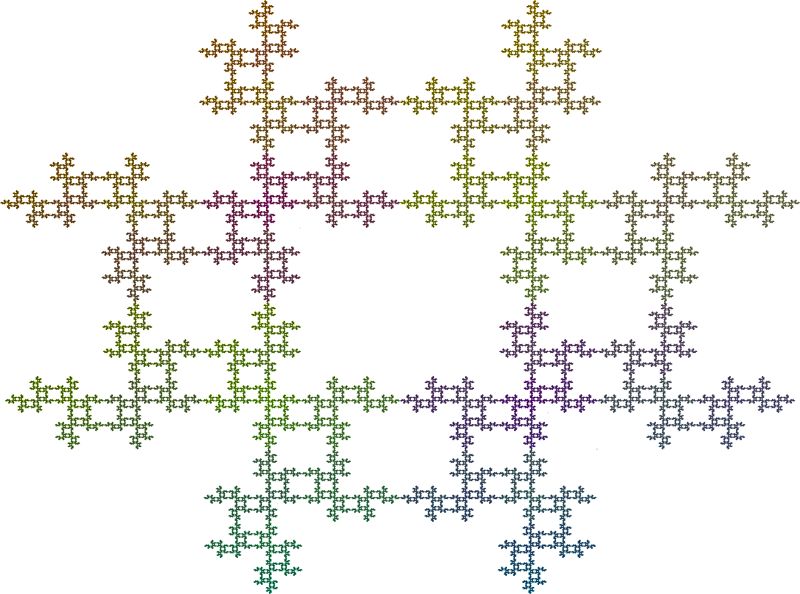At the moment, we roll a die to select which anchor point we move towards. We may end up rolling the same anchor point over and over again.
| 1 | 2 | 3 |
|---|---|---|

|

|

|
So let's add the constraint:
-
If we roll the same anchor point as we had on the last iteration, we roll again until we select a different one.
1 2 3 




I've labelled this the 'no repeat' constraint, as no anchor point is repeated.
When playing the chaos game with this constraint and four anchor points, we get a remarkable fractal structure.
Five anchor points also produces an especially beautiful image.
There are other constraints we could explore too.
Expanding on the 'no repeat' constraint, we can introduce another rule
-
If we roll the same anchor point as we had on the last iteration or any nearest neighbours , we roll again until we select a different one.
1 2 3 





This constraint only works if there are five or more anchor points. If there are three anchor points, then every anchor point is of equal distance from eachother. If there are four, then the game will just ping pong between two corners.
With five anchor points, we get another remarkably different fractal structure
We can also explore a constraint that is in the inverse of this.
- If we roll the same anchor point as we had on the last iteration or any furthest away anchors , we roll again until we select a different one.
